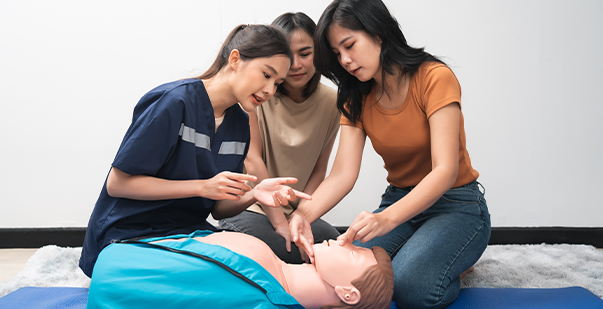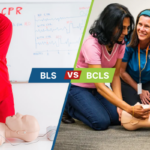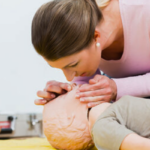
- Last Updated On: February 14, 2024
How to Learn CPR & AED for Free
Are you thinking of taking a life-saving course? Did you know that you can now take two courses for a discounted price? Also, the knowledge gained can help you save lives faster. Get CPR -AED certified for free when you take a combo course on the topic. It does not mean that you will not have to pay any cost, but the combined price certainly overshadows the individual cost of the courses. You will also learn about various steps to enhance your previous knowledge of lifesaving skills.
Combining CPR and AED Training
The CPR, AED combination training is a great way to learn the skills you need to save a life. AEDs (automated external defibrillators) are devices that can be used to shock a heart that is in cardiac arrest.
Combining CPR and AED training can help you to learn how to use these two life-saving techniques together. It is important because AEDs are most effective after cardiac arrest when used as soon as possible. Many different organizations offer combined courses. A CPR, AED training course covers the following topics:
- The basics of CPR: This includes how to assess a victim, perform chest compressions, and rescue breathing.
- The use of AEDs includes how to turn on an AED, attach the pads, and deliver a shock.
- The importance of teamwork includes working with others to provide effective CPR and AED care.
Steps for Enhancing Lifesaving Skills
Here are ten steps for enhancing your lifesaving skills:
- Take a CPR and AED training course: It is the most crucial step in enhancing your lifesaving skills. CPR and AED training can teach you how to perform CPR and use an AED, two of the most important life saving techniques.
- Practice your CPR and AED skills regularly: The best way to learn CPR and AED use is to practice your skills regularly. Many training organizations offer refresher courses or online resources to help you practice your skills.
- Learn about other lifesaving skills: There are many other lifesaving skills that you can learn, such as first aid, choking rescue, and bleeding control. Learning these skills can make you even more prepared to save a life in an emergency.
- Be prepared to act in an emergency: It is important to be prepared to act in an emergency, even if you are not trained in CPR or first aid. If you see someone who needs help, don’t hesitate to call 911 or your local emergency number.
- Don’t be afraid to ask for help: If you are uncomfortable performing CPR or first aid, don’t be afraid to ask for help from someone trained. There is no shame in asking for help; it could save a life.
- Be calm and collected in an emergency: It is important to stay calm and collected in an emergency. If you are panicking, you cannot think clearly and act effectively.
- Trust your instincts: If you think someone needs help, don’t hesitate to act. It is better to be safe than sorry.
- Be persistent: Don’t give up if your first attempt at CPR or first aid is unsuccessful. Keep trying until help arrives.
- Never give up hope: Even if the situation seems hopeless, never give up hope. There have been many cases where people have been saved after being in cardiac arrest for an extended period.
9 Benefits of CPR and AED Dual Certification
Here are nine benefits of CPR and AED dual certification:
- Increased Knowledge: CPR and AED training can help you learn the basics of cardiopulmonary resuscitation (CPR) and automated external defibrillator (AED) use, which can be invaluable in an emergency.
- Improved Skills: CPR and AED training can help you practice CPR and AED use, which will help you to become proficient in these techniques.
- Increased Confidence: CPR and AED training can help you gain confidence in using CPR and AEDs to save a life.
- Job Opportunities: Many employers require CPR and AED certification for working with the public.
- Compliance With Regulations: Some businesses and organizations must have employees who are CPR and AED certified.
- Peace Of Mind: Knowing you have the skills and knowledge to help someone in cardiac arrest can give you peace of mind.
- Sense Of Satisfaction: Helping to save someone’s life can be a very rewarding experience.
- Improved Public Health: CPR and AED training can reduce the number of deaths in society.
- Cost Savings: Studies have shown that CPR and AED use can save money by reducing the cost of medical care for cardiac arrest victims.
Conclusion
By combining CPR and AED training, you can start CPR immediately and then use the AED as soon as it is available. AED is very effective in restarting the heart with one jolt. The CPR AED combination training course lets you gain knowledge on both topics. Get CPR-AED certified for free at the American CPR Care Association website. Our platform offers discounted pricing for combination courses and even offers group discounts. Log onto the ACCA website today and start your journey.






